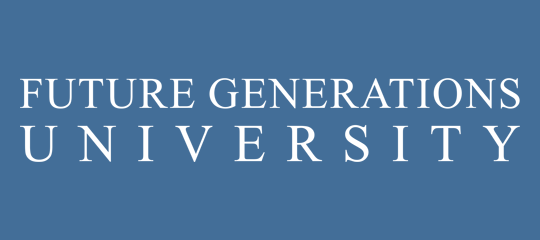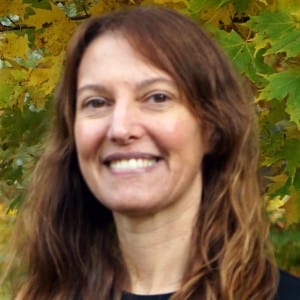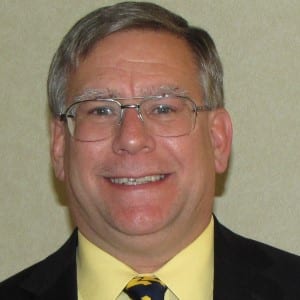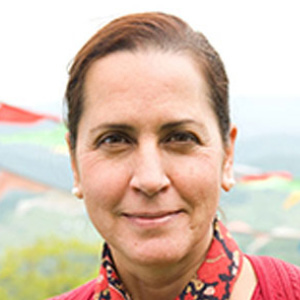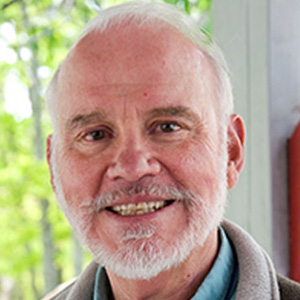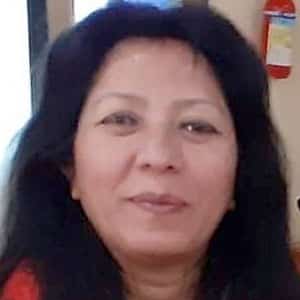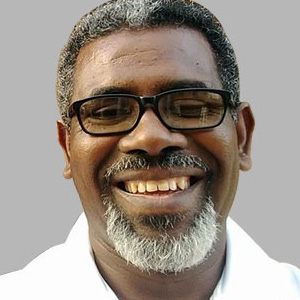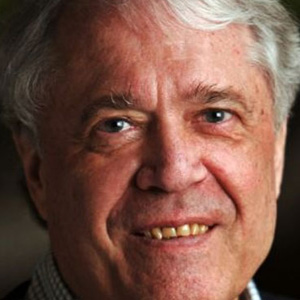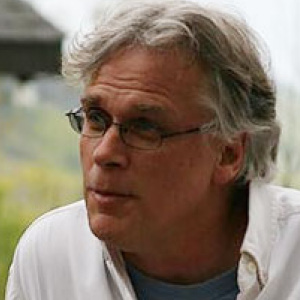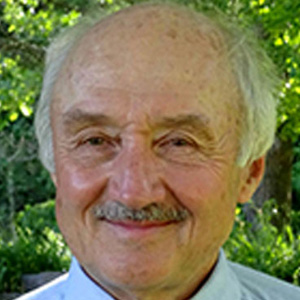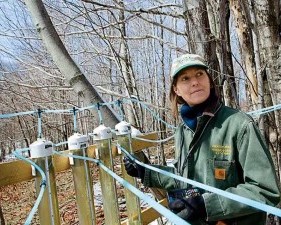
ABBY VAN DEN BERG
Associate Professor
Areas Of Expertise and/or Research
- Plant physiological ecology and maple syrup chemistry
Education
- Ph.D. 2007, University of Vermont
- Van den Berg, A.K., Perkins, T.D., Isselhardt, M.L., Godshall, M.A. and Lloyd, S.W. 2012. Maple syrup production with sap concentrated to high levels by membrane separation: effects on syrup chemical composition and flavor. International Sugar Journal 114:572-576.
- Van den Berg, A.K. 2012. Defining modern, sustainable tapping guidelines for maple syrup production. Northeastern States Research Cooperative, www.nsrcforest.org. 22p.
- Van den Berg, A.K., Perkins, T.D., Isselhardt, M.L., Godshall, M.A. and Lloyd, S.W. 2011. Effects of producing maple syrup from concentrated and reconstituted sap of different sugar concentrations. International Sugar Journal 113:35-44.
- Van den Berg, A.K., Perkins, T.D., Isselhardt, M.L., Godshall, M.A. and Lloyd, S.W. 2009. Air injection into concentrated maple sap during processing: impact on syrup composition and flavor. Journal of the Science of Food and Agriculture 89:1770-1774.
- Van den Berg, A.K., Vogelmann, T.C. and Perkins, T.D. 2009. Anthocyanin influence on light absorption within juvenile and senescing sugar maple leaves – do anthocyanins function as photoprotective visible light screens? Functional Plant Biology 36:793-800.
- Perkins, T.D. and van den Berg, A.K. 2009. Maple syrup – production, composition, chemistry, and sensory characteristics. In Advances in Food and Nutrition Research (Ed. S.L. Taylor), 56:103-144. Academic Press, San Diego, CA, USA.
- Van den Berg, A.K., Perkins, T.D., Isselhardt, M.L., Godshall, M.A. and Lloyd, S.W. 2009. Effects of air injection during sap processing on maple syrup color, chemical composition and flavor volatiles. International Sugar Journal 111(1321):37-42.
- Van den Berg, A.K. and Perkins, T.D. 2007. Contribution of anthocyanins to the antioxidant capacity of juvenile and senescing sugar maple (Acer saccharum) leaves. Functional Plant Biology 34:714-719.
- Perkins, T.D., Morselli, M.F., van den Berg, A.K. and Wilmot, T.R. 2006. Maple chemistry and quality. In North American Maple Syrup Producers Manual (R.B. Heiligmann, M.R. Koelling, T.D. Perkins, Eds.) pp 294-300. The Ohio State University, Columbus, OH.
RAJ MASIH
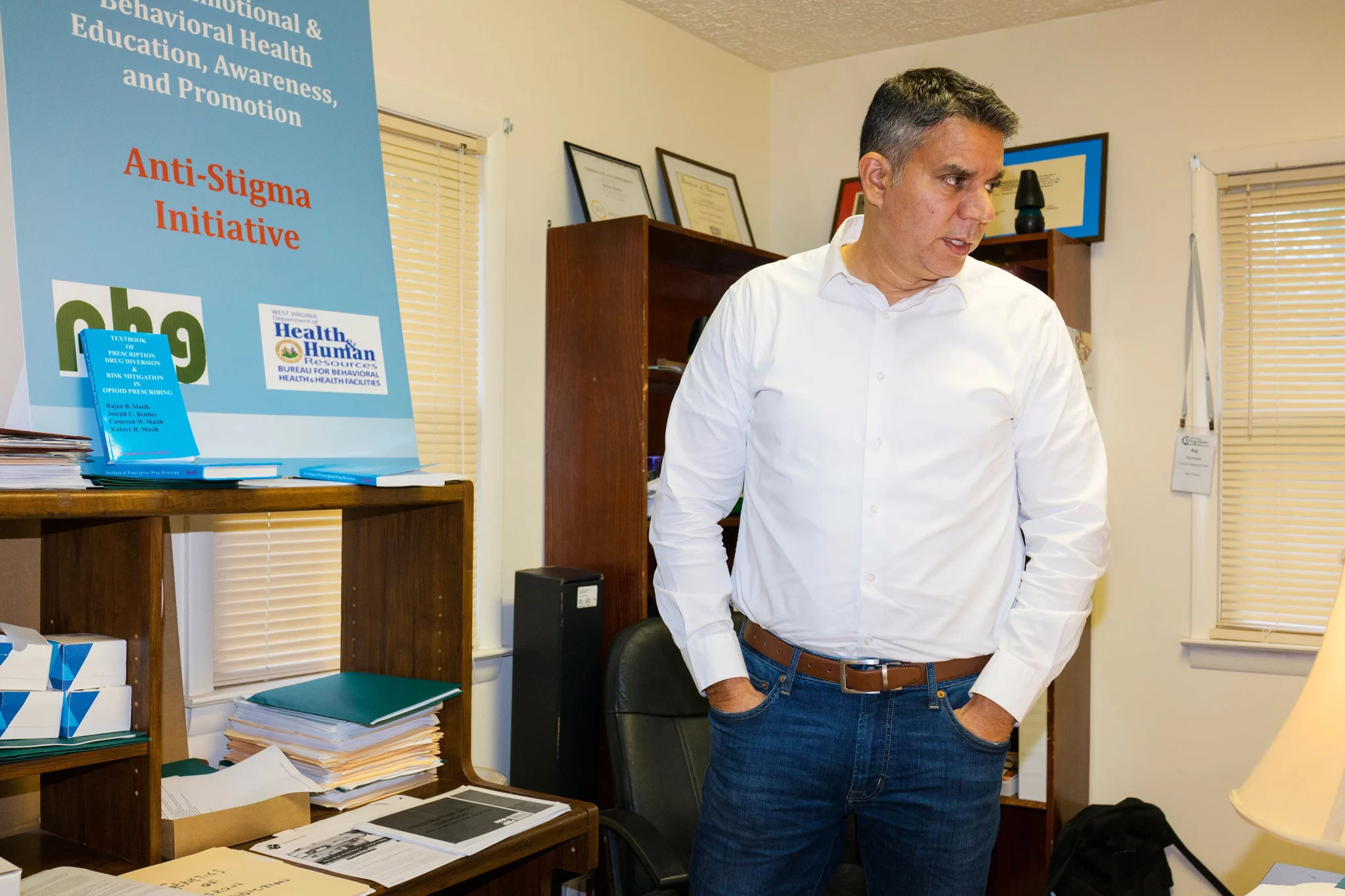
RAJ MASIH
Research Professor
Education
- MD- Panjab University
- MPH- Everglades University
- Residency- Texas Tech University Health Sciences Center
- Masih R, Rivera M. Miliary tuberculosis causing ARDS and hemodynamically proven septic shock: A surviving case. Patient Care, Aug.1998; 163-167
- Masih R, Makani A. Squirrel dinner causing acute appendicitis. Journal of Urgent Care Medicine, July 2008
- Masih R. Pachydermodactyly in poultry workers: A report of 2 cases. International Journal of Dermatology Research. Vol 1, Issue 2 2020; 23-25
- A Quantitative Statistical Analysis of the efficacy and outcomes of certified peer recovery coaches engaging people with substance use disorders in a harm reduction program. International Journal of Advanced Educational Research, 2021; 6 (1): 46-48
- Masih R., Titus T., Mathias P., Brewer M. Neuro-physiologic imaging in the context of traditional theories of human motivation. International Journal of Medical and Health Research. 2021; 7 (6): 5-10.
- Masih R., Philbrick M., Masih C., Masih B., Landis M. The Role of Phytochemicals in the Prevention and Treatment of Alzheimer’s disease. International Journal of Medical and Health Research. 2021; 7 (10): 5-9
- Masih R., Masih B., Arbaugh K., Philbrick M., Pool H., Bhatia H., Panchal K., Mongold A., Landis C. Exercise as an Adjuvant to Post Acute Withdrawal Syndrome Management in Substance Use Disorder. IOSR Journal of Sports and Physical Education. Vol 9, Issue 4 2022; 05-09
- Masih R., Masih B., Arbaugh K., Philbrick M., Pool H., Masih C., Bhatia H., Panchal K., Mongold A., Landis C., Cullers S. Correlates of the Opioid Epidemic and Entrepreneurship: Attention Deficit Hyperactivity Disorder (ADHD). IOSR Journal of Humanities and Social Science. Vol. 27, Issue 9, Series 3 2022; 51-53
- Masih R, Masih B, Rodrigues J, Mathias, P. Pharmacovigilance and Drug Safety Considerations of Loperamide as an increasing drug of abuse: a report of 3 cases and an analysis of the FDA FAERS database from 2002-2022. International Journal of Pharmacovigilance 5(1):1-5. 2-9
KEITH A. HEASLEY
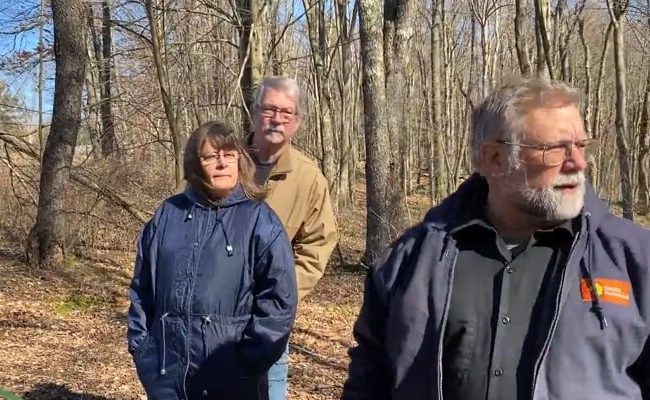
DR. KEITH A. HEASLEY
Research Professor
Education
- Ph.D. 1998, Mining and Earth Syst. Eng. (Minor-Computer Science), Colorado School of Mines
- M.S., 1988, Mining Engineering, The Pennsylvania State University
- B.S., 1981, Mining Engineering, The Pennsylvania State University
- Krog, R. B. and K. A. Heasley, 2017, “Longwall Emissions During Falling Atmospheric Pressures and the Sample Frequency Required to Detect Them.” Proceedings of the 16th North American Mine Ventilation Symposium, June 17-22, Colorado School of Mines, Golden, CO, p. XXX-XXX.
- Yang, Jian and Keith A. Heasley, “Calibrating LaModel for Subsidence,” Proceedings of the 35th International Conference on Ground Control in Mining, Morgantown, WV, July 26-28, 2016, p. 104-112.
- Newman, Christopher, Zach Agioutantis and Keith Heasley, “Introducing the New Windows ARMPS-LAM Program,” Proceedings of the 35th International Conference on Ground Control in Mining, Morgantown, WV, July 26-28, 2016, p. 98-103.
- Newman, Christopher R. and Keith A. Heasley, “Development of An Online User’s and Training Manual for LaModel,” Proceedings of the 34th International Conference on Ground Control in Mining, Morgantown, WV, July 28-30, 2015, p. 209-216.
- Li, Kaifang and Keith A. Heasley, “Calculating the Potential for Coal Pillar Bumps Using a Local Mine Stiffness Criterion,” Proceedings of the 49th U.S. Symposium on Rock Mechanics, San Francisco, CA, June 28-July 1, 2015, Paper 15-241, 8 p.
- Heasley, Keith A., “LaModel – A Program for Coalmine Modelling,” Proceedings of AusRock 2014: Third Australasian Ground Control in Mining Conference, Sydney, Australia, Nov. 5-6, 2014, 6 p.
- Zhang, Peng, Keith A. Heasley and Zacharias G. Agioutantis, “A Comparison Between ARMPS and the New ARMPS-LAM Programs,” Proceedings of the 33rd International Conference on Ground Control in Mining, Morgantown, WV, July 29-31, 2014, p. 170-174.
- Li, Kaifang and Keith A. Heasley, “Using Field Measurements to Quantify the Post-Failure Behavior of Coal,” Proceedings of the 48th U.S. Symposium on Rock Mechanics, Minneapolis, MN, June 1-4, 2014, Paper 14-7133, 7 p.
- Sears, Morgan and Keith A. Heasley, “Calibrating the LaModel Program for Shallow Cover Multiple-Seam Mines,” Proceedings of the 32nd International Conference on Ground Control in Mining, Morgantown, WV, July 30-August 1, 2013, p. 99-106.
- Zhang, Peng and Keith A. Heasley, “Initial Results from Implementing a Laminated Overburden Model into ARMPS,” Proceedings of the 32nd International Conference on Ground Control in Mining, Morgantown, WV, July 30-August 1, 2013, p. 239-247.
- Tulu, Ihsan B. and Keith A. Heasley, “Investigating Abutment Loading,” Proceedings of the 31st International Conference on Ground Control in Mining, Morgantown, WV, July 31-August 2, 2012, p. 1-10.
- Heasley, Keith A., “Calibrating the LaModel Program for Site Specific Conditions,” Proceedings of the 31st International Conference on Ground Control in Mining, Morgantown, WV, July 31-August 2, 2012, p. 1-8.
AJMAL SHIRZAI
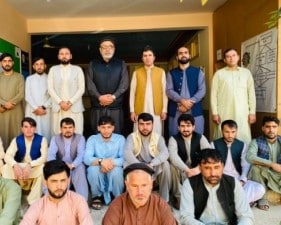
AJMAL SHIRZAI
Research Professor, Future Generations Afghanistan Country Director
Education
- Ph. D Candidate, Erasmus University Rotterdam, the Netherland
- Master of Art (M.A.), Future Generations University, West Virginia, USA
- Master of Science (MSc), Purbanchal University, Nepal
- Bachelor of Science (BSc), Kabul University, Afghanistan
During 1980s he was associate professor in Kabul University, and from 1990 – 2006 he was working in various NGOs and from 2007 to 2010 he worked as strategic planning advisor in MRRD and later as Head of Afghanistan Institute for Rural Development. Since 2011, he has been working as Country Director of Future Generations Afghanistan. Presently, he is a Ph.D. Candidates at the School of Social and Behavioral Science of Erasmus University – Rotterdam.
- Country Program Strategy of Small Grant Program (2016-2018) For Afghanistan, Global Environmental Facilities, UNDP, Afghanistan.
- Review and evaluation Report of Small Grant Program (2013-2015) of Global Environmental Facilities, UNDP, Afghanistan.
- Baseline report of USIP funded project on “Promote Social Cohesion and Cultural Competency of Badpakh Communities for Peace and Conflict Resolution at Laghman Province in Eastern Afghanistan”, USIP, Afghanistan, 2015.
- “Concept of Nutrition and Food Security”, Training Guidance for female teachers and women, French Embassy and Future Generations, Kabul, Afghanistan, April 2014
- Engaging Community Resilience for Security, Development and Peace building in Afghanistan (Research Report), Future Generations, January 2014
- “Strengthening Synergy and Coordination among Local Governance Institution in Afghanistan” Future Generations Graduation School, West Virginia, USA, April 2013.
- Review on Afghanistan Development Plans, published in MRRD’s magazine (Dekada), 4th quarter, 2010
- “Assessing Rural Development initiatives in Afghanistan”: Exploring Future Opportunities, CIRDAP, Dhaka, Bangladesh. October 2009.
- “Analysis of Causes and Dynamics of Forced Migration in Midwestern Region”, Nepal, SAIT, Kathmandu, Nepal, February 2006
- “Displacement in Afghanistan, PM paper published in book title” Forced Migration in the South Asian Region: Displacement, Human Rights and Conflict Resolution”, Jadavpur University, Kolkata, India, 2004
- “The Issues of Displacement and Internally Displaced Persons in Nepal”, Published in Charter Publication Souvenir, Rotary Club of Jawala khel, Nepal, September 2003
- “RRA Research in the Central and Northern Afghanistan”, Ockenden International, January 2001
- “Fruit Catalogue of Western Afghanistan”, Ockenden International – Afghanistan, September 2000
- “PRA Research report in Engil District, Herat province, Afghanistan”, Ockenden International, May 1999
RITA THAPA
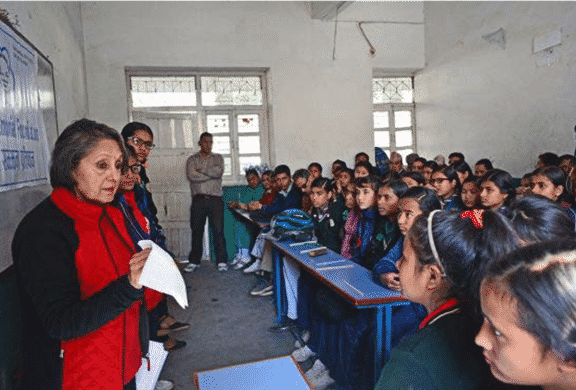
RITA THAPA
Professor Equity & Empowerment (Public Health)
Education
- M.P.H. Johns Hopkins University
- M.B.B.B., King George Medical College, Lucknow University (India)
- Thapa R, Subedi RK, Regmi G, Thapaliya R, Vaidya A, Karki BB. Self-Reported Changes in Risk Behaviours of Cardiovascular Diseases among School Adolescents in Nepal: Application of an Integrated Experiential Learning Approach. Global Heart. 2020;15(1):40. DOI: http://doi.org/10.5334/gh.818
- Thapa R. Changing Public Health Paradigm: Improving Maternal Child Health and Family Planning. Fifth Public Health Foundation Lecture. Nepal Public Health Foundation; 2014 June 30.
- Thapa, R. (2003). Manpower Development For MAternal-Child Health And Family Planning Program A- Neplese Case Study. Journal of Nepal Medical Association, 11(4), 109–126. https://doi.org/10.31729/jnma.1364
- Thapa R, Karki B. A case study on Current MDG Status in a selected poorest community in Nepal 2011. Sasakawa Peace Foundation;Tokyo 2011 August 10
- Thapa R. Integrated Health Care Delivery System Nepali Perspectives: Souvenir 23 rd All Nepal Medical Conference of All Nepal Medical Association Association 2007 November 1.
- “Health Sector Strategy-An Agenda for Reform, Nepal”, Proceedings of the Third Global Symposium on Health and Welfare Systems Development in the 21 st Century, 6-8 November 2002.
- “Health and Welfare Systems: A Regional Overview”, Report of the Global Symposium on Health and Welfare Systems Development in the Twenty-first
Century, Kobe, Japan, 1-3 November 2000. - “Making Pregnancy Safer: A Health Sector Strategy for Reducing Maternal and Perinatal Morbidity and Mortality”, Proceedings of the World Congress on Women’s Health, organized by the Federation of the Obstetrics and Gynecological Societies of India [FOGSI], Calcutta, 10-12 November 2000.
- WHO Perspectives on Making Pregnancy Safer: A Health Sector Strategy for Reducing Maternal and Perinatal Mortality in the SEAR Context”, Proceedings of the Conference of Indian Medical Association “ACADIMA 2000”, New Delhi, 20-22 October 2000.
- Safe Motherhood: Progress and Perspectives”, Proceedings of the 43 rd All India Congress of Obstetrics & Gynecology of FOGSI, King George’s Medical College, Lucknow, India, 27-30 December 1999.
- Women’s Participation and Perspectives in Health Issues”, discussion notes prepared for the Expert Group Meeting on Population and Women, Gaborone, 22-26 June 1992.
- Technical contribution to WHO’s “Women’s Health: Across Age and Frontiers”, the background document for WHO Technical Discussions on Women, Health and Development, Geneva, 1992.
- Technical contribution to WHO’s “Health Dimension of Economic Reform”, the background document for the International Forum on Health: A Conditionality for Economic Development – Breaking the Cycle of Poverty and Inequity, Accra, Ghana, 4-6 December 1991.
- Co-authored “A Preliminary Report on Prevention of Typhoid Fever in Nepal With the Vi-Capsular Polysaccharide of Salmonella Typhi”, New England Journal of Medicine, October 1987.
- Role of Traditional Medicine in the Demand of Supply of Rural Health Services”, proceedings of the Regional Seminar on the Use of Rural Health Services, Asian Development Bank, Manila, 24-25 January 1986.
- Diarrheal Diseases Research Study: Preliminary Findings on the Feasibility of Homemade Oral Rehydration Solution”, an article published by WHO Chronicle, 1980.
- Nepali Child in the Perspective of Health Programs in 1980s”, a paper presented at the Nepal Medical Association, International Year of Child Seminar “The Child in Nepal”, 14 December 1979.
- Primary Health Care in the Nepalese Context”, a paper co-authored with Dixit and Smith, proceedings of the 8 th All Nepal Medical Conference, 1977.
Women in Nepal”, an article published by the Rising Nepal, 1974. - Development of Health Manpower for FP and MCH Program”, a case study published by All Nepal Medical Association Journal, Nepal, 1974.
- Country Profile of Nepal, Daniel Taylor and Rita Thapa, Country Profiles, The population Council, April 1972 Managerial Aspects of Family Planning and MCH program in Nepal, Proceedings of the 4 th All Nepal Medical Association Meeting, 1968.
TOM HAMMETT
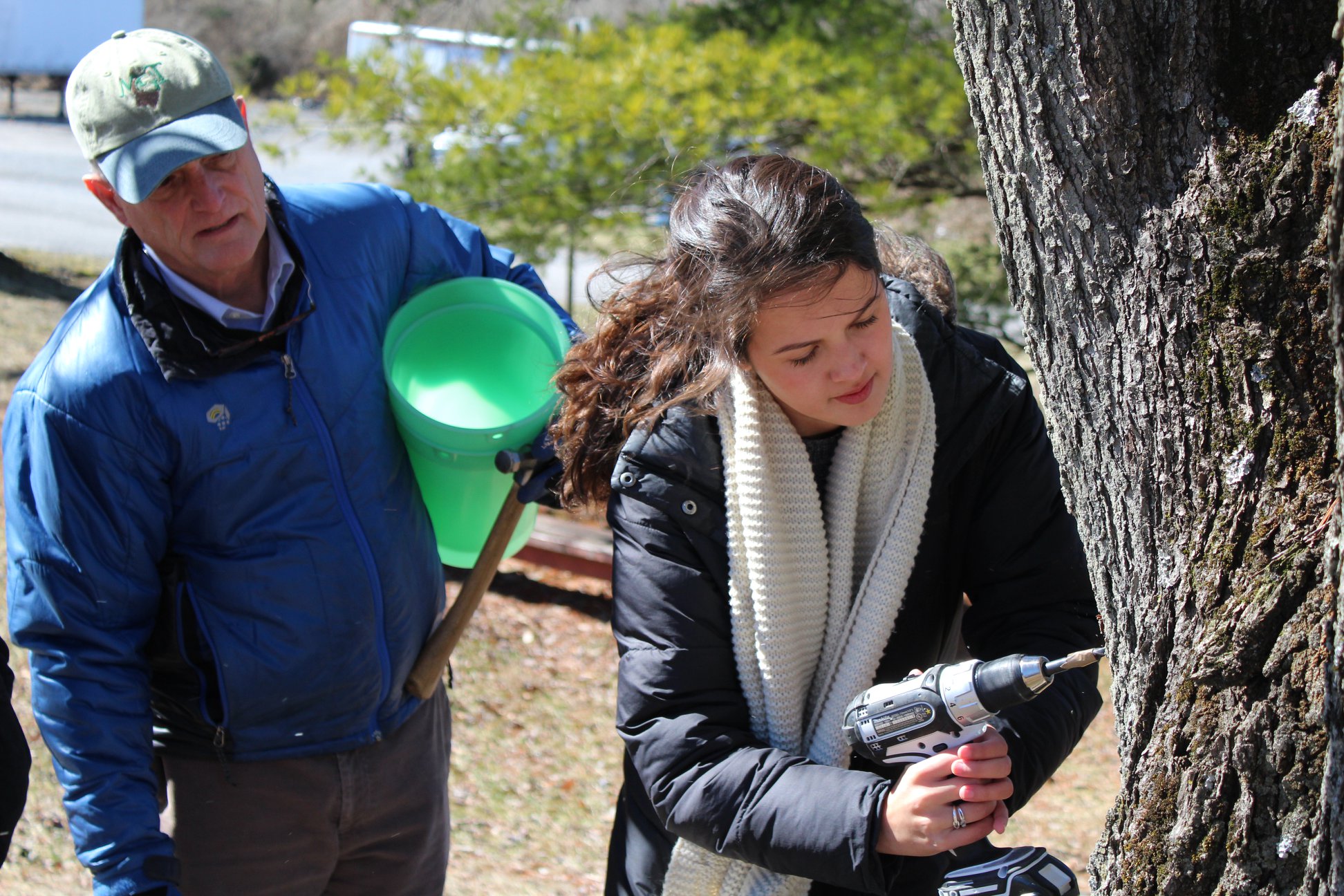
TOM HAMMETT
Research Professor
Education
- B.S. – University of New Hampshire, 1974
- M.S. – University of Georgia, 1986
- Ph.D. – University of Georgia, 1991
Tom Hammett has 40 years’ experience with non-timber forest products (NTFPs), researching means to improve landowner and entrepreneur livelihoods through production, processing, and marketing of speciality agricultural products. A Research Faculty member at Future Generations University, he also serves as a Professor of Sustainability, Innovation and Design in the Department of Sustainable Biomaterials in Virginia Tech’s College of Natural Resources and Environment and currently focuses on the use of natural materials, such as bamboo and hemp, and nature-based enterprises.
He pairs his outreach for human and institutional capacity development in agriculture and natural resources with experiences as the director of a major global agriculture training and education project. This dual skillset will help build training opportunities in agriculture, natural resources, and forest sustainability that is appropriate for the Appalachian region.
He is active participant in regional NTFP research and outreach programs. He currently serves in leadership roles in three relevant research and outreach programs: to identify success factors in agroforestry and forest farming; to develop maple syrup products and markets; and a Virginia landowner livelihood and tree syrup development program.His work as Research Faculty member with Future Generations University focuses on developing and supporting NTFP educational and research programs throughout the Appalachian region. He has worked closely with many local partners in Central Appalachia to utilize indigenous forestry and agriculture resources to address social and economic challenges.
His international experience with NTFPs will also contribute to this project. He assessedthe potential for local market and enterprise development in Asia, developedteaching and learning capacityin several countries in Africa, Central America, and Asia, anddevelopedglobal NTFP distance learning resources. His work also linkedNTFPsand ecosystem services withusing forests to cope with infectious diseases (i.e., HIV/AIDS), and developed market protocols for specialty crops and community-basedenterprises. He has publishedone book on the region’s forest products, numerous technical reports, training manuals and extension materials, and over forty peer-reviewed articles and publications.
- Oct. 1, 2020 – Sept. 30, 2023 – Co-PI for “Accessing South Atlantic Markets for US Maple Syrup”: educating consumers and enhancing distribution networks. In collaboration with Future Generation University; funded by USDA through an ACER Access Grant.
- May 1, 2020 – Oct. 1, 2921 – Co-PI for“Sharing Successes in Forest Farming across Central Appalachia; in collaboration with Livelihoods Knowledge Exchange Network; funded by USDA National Agroforestry Center
- Oct. 1, 2018 to Sept. 30, 2021 – PI for “Expanding Livelihood Options for Virginia Land Owners Through Tree Syrup Production”; Specialty Crop Block Grant, funded by USDA, through the VA Dept. of Agriculture and Consumer Services
- Visiting Professor, Agriculture and Forestry University (AFU), Nepal – March 2017 –present; develop AFU extension and outreach capacity as full land grant university
- Member, Appalachian Caucus at Virginia Tech – Jan. 2016 to present
- Eifert, Joell, Renee Boyer, Tom Hammett, Emily Pomfrey Wells, and Lily Yang. 2019. What do I need to know to sell maple syrup at the farmers market? Publication number FST-311 Cooperative Extension Service, Virginia Tech, Blacksburg, VA.
- Boley, B. Bynum, Nancy McGehee, and A. L. Hammett. 2017. Importance-performance analysis (IPA) of sustainable tourism initiatives: The resident perspective. Journal of Tourism Management. Vol. 54. Pages 66-77.
- Khadka, C. B., A.L. Hammett, A. Singh, M. K. Balla, and Y. P. Timilsina. 2016. Ecological Status and Diversity Indices of a Himalayan Medicinal Orchid Dactylorhiza hatagirea (D.Don) Soo) and its Associates in Lete village of Mustang District. BankoJanakari Vol. 26. No. 1 p. 45-52.
- Barany, Marc E., A. L. Hammett, K. Stadler and E. Kegni. 2004. Non-timber forest products in the food security and nutrition of smallholder households afflicted by HIV/AIDS in sub-Saharan Africa. Forests, Trees and Livelihoods 14: 3-18.
- Greene, Sarah M., A. L. Hammett, and Shashi Kant. 2000 Non-Timber Forest Products Marketing Systems and Market Players in Southwest Virginia: Crafts, Medicinal and Herbal, and Specialty Wood Products. Journal of Sustainable Forestry, Vol. 11(3): 19-40.
- Hammett, A. L. and J. L. Chamberlain. 1998. Sustainable Use of Non-Traditional Forest Products: Alternative Forest-based Income Opportunities. In: Proceedings of Natural Resources Income Opportunities on Private Lands Conference. April 5-7, 1998. Hagerstown, Maryland. Hosted by University of Maryland. Pp 141–147.
SEBASTIAN K. HERZOG
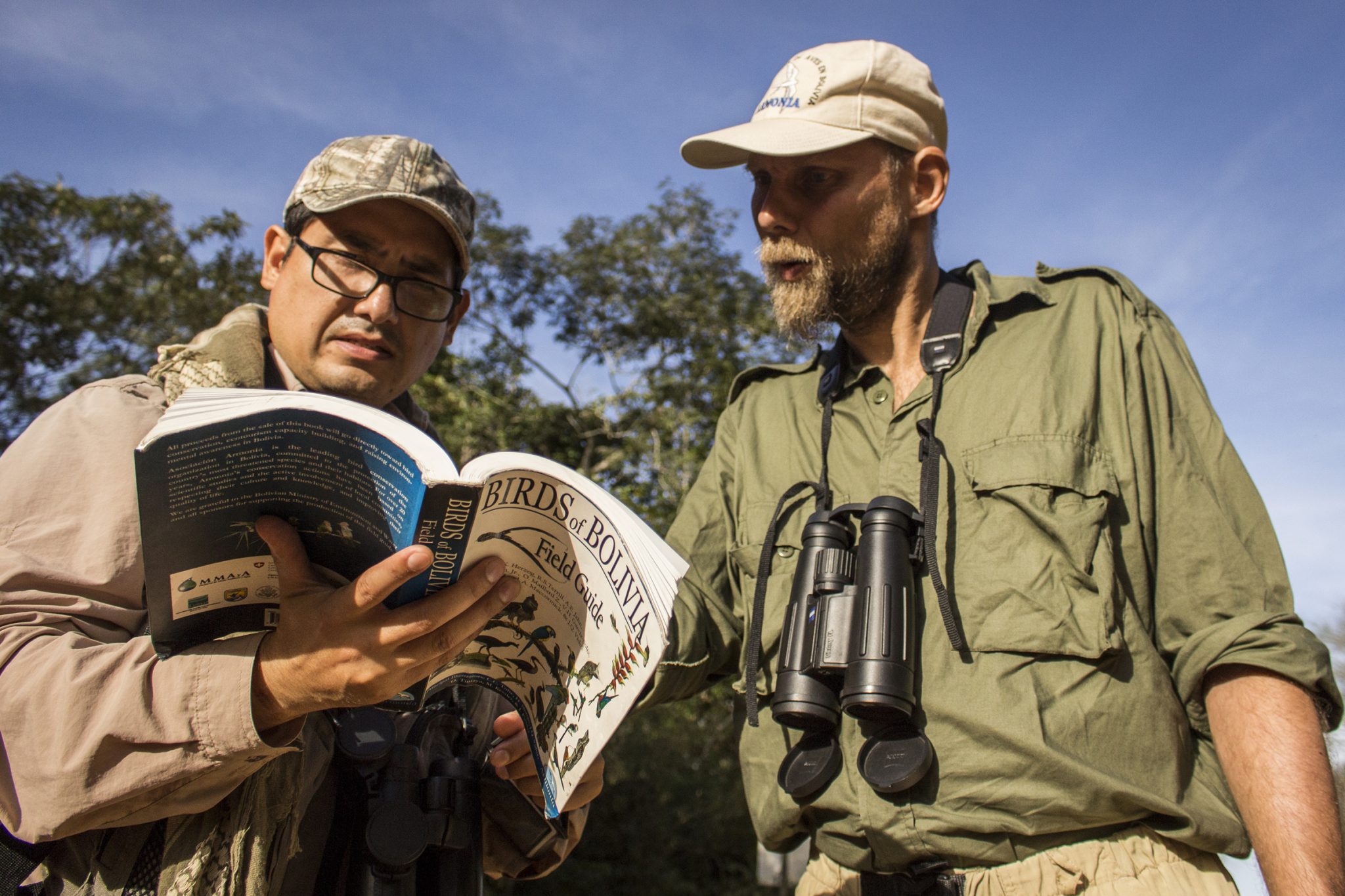
SEBASTIAN K. HERZOG
Research Professor
Education
- Ph.D. University of Oldenburg, Germany (Biological Sciences)
- B.S./M.S. University of Göttingen, Germany (Biological Sciences)
LAURA ALTOBELLI
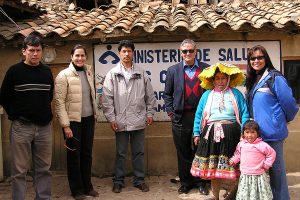
LAURA ALTOBELLI
Research Professor
Education
- Dr.P.H. Johns Hopkins University Bloomberg School of Public Health
- M.P.H. Johns Hopkins University Bloomberg School of Public Health
- B.A. University of Missouri, Columbia
- Altobelli, Laura C., Sharing Histories—a transformative learning/teaching method to empower community health workers to support health behavior change of mothers, Hum Resour Health. Read More
- Sharing Histories Qualitative study Cusco
- Guide to Sectorization for Community Health
- Sharing Histories – How To Guide
- Sharing Histories – Health in Hands of Women Project
- Altobelli, Laura (2017) Sharing Histories – a transformative learning/teaching method to empower Community Health Workers to support health behavior change of mothers. – Read More
- Altobelli LC., Cabrejos J, Suarez V, Valverde R, Carcamo C, Becker S, Taylor CE, Taylor D. Autobiographical memories as a teaching method for Community Health Workers to promote maternal health behaviors and reduce stunting: a cluster randomized trial. Manuscript in preparation.
- Altobelli LC. Autobiographical memories – a transformative learning method to empower Community Health Workers to change mothers´ health behavior and reduce child stunting: review of supporting literature. Submitted for publication 2017.
- Altobelli LC (2015) “Effectiveness in Primary Healthcare in Peru”, In: E. Beracochea (Ed.) Improving Aid Effectiveness in Global Health. New York: Springer Global Publishing.
- Altobelli LC, Paredes P, and Taylor CE (2015) “Peru: Communities and governments learning to work together,” In: Taylor D. (Ed.) Just and Lasting Change: When Communities Own Their Futures. Second Edition. Baltimore: Johns Hopkins University Press.
- Wilcox S, Altobelli LC, and Cabrejos JC (2014). “Final Project Evaluation Report – Health in the Hands of Women: A test of teaching methods,” Project implemented in Huánuco, Peru by Future Generations under Cooperative Agreement #AID-OAA-A-10-00048, USAID Child Survival and Health Grant Program FY2010 – FY 2014.
- LeBan K, Story WT, Altobelli LC, Gebrian B, Hossain J, Lewis J, Morrow M, Nielsen J, Rosales A, Rubardt M, Shanklin D and Weiss J (2015) “A global framework for integrating community-based maternal, newborn, and child health strategies into existing health systems: revaluing the role of international non-governmental organizations,” Annals of Global Health; January–February, 2015 Volume 81, Issue 1, Pages 37–38. 02/2015. DOI: http://dx.doi.org/10.1016/j.aogh.2015.02.596
- Rengifo G, Altobelli LC, Cabrejos JC, Talenas D (2014) “Implementation of the Sectorization strategy to strengthen health promotion in the Huánuco Region,” In: Tarev A, Campos C, Huaripata J, and Shishido S (Ed.) Sistematization of Experiences in Health Promotion II. Lima: Ministry of Health of Peru.
- Altobelli LC (2013) “Future Generations,” In: Kamden Hoffman, “The Role of Social Accountability in Improving Health Outcomes: Overview and Analysis of Selected International NGO Experiences to Advance the Field.” Washington, DC: USAID/MCHIP.
- Perry H, Townsend J, McQueen S, Adano U, D’Harcourt E, Newsome M, Jones E, Roth R, Shreshta R, Swedberg E, Ngatia P, Leban K, Altobelli L, Roseman E, Gryboski K. (2012) “Which Community Support Activities Improve the Performance of Community Health Workers? Review of the Evidence and of Expert Opinion with Recommendations for Policy, Practice and Research.” Final Report of Evidence Review Team 1. U. S. Government Evidence Summit: Community and Formal Health System Support for Enhanced Community Health Worker Performance. Washington, DC. Nov. 16, 2012.
- Altobelli LC, Cabrejos JC, Espejo L, Vargas A, and Talenas D (2012) Methodological Guide to the Sectorization Strategy for Health Promotion in Co-management with the Community: To strengthen primary health care services focused on maternal, neonatal, and child health and nutrition in the community. Lima: Future Generations and Regional Government of Huánuco.
- Altobelli LC and Acosta-Saal C (2011) “Local Health Administration Committees (CLAS): opportunity and empowerment for equity in health in Peru”, In: Erik Blas, Johannes Sommerfeld and Anand Sivasankara Kurup (eds) Social determinants approaches to public health: from concept to practice. World Health Organization, Geneva, with support from the Alliance for Health Systems Policy and Research, WHO.
- Altobelli LC (2011) “Sharing Pregnancy Histories as Part of Community Education for Maternal and Neonatal Health.” Final research report to EngenderHealth – Maternal Health Task Force. New York: EngenderHealth MHTF. Research subgrant from MHTF with support from Bill & Melinda Gates Foundation.
- Altobelli LC, Espejo L, Cabrejos JC, Vargas A (2010) Proposals for Management Documents for Constitution of Local Health Administration Communities (CLAS) under ´Law N° 29124 that establishes Co-Management and Citizen Participation in Health Facilities at the Primary Level of Care of the Ministry of Health and the Regions´ and its corresponding regulations approved by Supreme Decree N° 017-2008-SA. Lima, Peru: Future Generations in collaboration with Ministry of Health.
- Charleston R, Altobelli LC, Vargas A, Taylor CE, Perry H (2009) “Final Project Evaluation Report – NEXOS Project: Promotion of Maternal-Infant Health in the Context of Co-Management of Primary Health Care”. Implemented in Cusco, Peru by Future Generations under Cooperative Agreement #GHS-A-005-00011-00 USAID Child Survival and Health Grant Program FY2005 – FY2009.
- Altobelli LC, Espejo L, and Summer A (2008) “Successes and Failures of the Maternal Waiting Home Strategy in Rural Cusco, Peru: Lessons Learned from Health Personnel and Quechua Women”. Report on qualitative research undertaken through the NEXOS Project by Future Generations, with funding from USAID-Child Survival and Health Grant Program. Collaboration by Emory University graduate student for master´s thesis.
- Altobelli LC (2005) “Demands a clear policy on primary health care,” Gestión Médica May 8, 2005.
- Altobelli LC (2002) “Community participation in health (the Peruvian experience with CLAS)”, In: Arroyo J. (Ed.) Health Policies II – 2002-2006. Lima, Peru: Consorcio de Investigación Económica y Social / UK-DFID.
- Altobelli LC (2002) “Nature and magnitude of practices in breastfeeding and complementary feedin,” In: Carrasco N and Vega S, Situational Assessment of Breastfeeding and Complementary Feeding in Peru – 2001. Lima, Peru: CEPREN / Academy for Educational Development – Linkages Project.
- Altobelli LC and Y Levano (2002) “Final Impact Evaluation — Program for Infant Nutrition, Health, and Sanitation 1996-2001”, Agency for Development and Resource Assistance – ADRA Bolivia.
- Altobelli LC, J Alarcón, O Saavedra, and V Suárez (2001) “Plan for Andean Development for Food Security – United States Agency for International Development Title II 1996-2001: Final External Evaluation Report”, Adventist Agency for Development and Resource Assistance – ADRA Peru.
- Altobelli LC (2001) “Decentralization to Improve Health Care for the Poor: Case Study of the Health Sector in Peru”, Background report prepared for the Institutional Governance Review-Peru, Poverty Reduction Unit, World Bank, Washington, DC.
- Altobelli LC and O Castillo (2001) “Report on Final External Evaluation Mission: Proyecto APRISABAC – Primary Health Care and Basic Sanitation in Cajamarca”, Report prepared for the Royal Embassy of the Netherlands and COSUDE.
- Altobelli LC (2001) “Basic Health and Nutrition Project 1995-2000: Lessons Learned”, World Bank Regional Office for Bolivia, Ecuador, and Peru.
- Rogers B, S Rajabiun, J Levinson, K Tucker, L Altobelli, H Creed-Kanashiro, M Núñez, M Penny, and E Vásquez (2001) Reduction of Chronic Malnutrition in Peru: Proposal for a National Strategy. Lima, Peru: Tufts University School of Nutrition Science and Policy / USAID Office of Nutrition.
- Altobelli LC with J Pancorvo (2000) “Shared Administration Program and Local Health Administration Communities: Case study from Peru”, Paper prepared and presented at the III Forum for Europe and the Americas on Health Sector Reform, World Bank. San José, Costa Rica, May 2000.
- Altobelli LC (2000) “Final External Evaluation Report on the ENLACE Project: Provinces of Otuzco-Julcán, Department of La Libertad, Peru”, USAID Child Survival and Health Grant Project implemented by CARE Peru FY1996-FY2000.
- Altobelli LC (2000) Health and Hygiene Education in Water and Sanitation Projects. Lima, Peru: CARE/United Nations Development Program(UNDP)/World Bank Programme for Water and Sanitation.
- Altobelli LC and M Gómez (2000) “Impact Evaluation 1997-1999 of the Infant Nutrition Program of ADRA Perú: Final Report on Ten Departments”. Lima, Perú: DS Consult and ADRA Perú.
- León FR and Altobelli LC (1999) “Hypothesis to Resolve the Enigma of the ENDES (1997) Data on Maternal Mortality”, In: FR León (ed.) What Do We Know about the Distribuction of Maternal Mortality in Peru, Its Causes and Its Consequences? Proceedings of the First Summer Seminar, January 8, 1999. Lima: Population Council.
- Altobelli LC (1999) “Consolidation and Integration of Nutrition in the Health Sector of Peru”, Proposal prepared for the Coordinating Unit for Modernization of the Public Health Sector of Peru. World Bank Program to Support Health Reform (PAR-Salud) Project. March 4, 1999.
- Altobelli LC (1998) “Comparative Analysis of Primary Health Care Facilities with Participation of Civil Society in Venezuela and Peru”. Paper prepared for and presented at the Inter-American Development Bank Annual Meeting of Governors Seminar on “Social Programs, Poverty, and Citizen Participation”. Cartagena, Colombia, March 1998.
- Altobelli LC (1998) “Health Reform, Community Participation, and Social Inclusion: the Shared Administration Program”. Paper prepared for the Mid-term Project Evaluation of the UNICEF-PERU cooperation. August, 1998.
- Altobelli LC (1998) “Identification of unsatified demand for reproductive health services in Huancavelica, Perú. Results of a health survey of rural women”, Working Papers, Number 27, 1998. Population Council INOPAL III
- Altobelli LC and Esquiche E (1998) “Opinions of Women Regarding Quality of Care at the Referral Hospital of Ayacucho: Focus Groups”, Paper prepared under an institutional research strengthening grant of INOPAL III, Population Council – New York, Lima, Peru.
- Altobelli LC, Calderón M, Guerra V and Rivera E (1998) “Survey on Discontinuation of Attendance at the Family Planning Program of the Referral Hospital of Ayacucho and the Discontinuation of Contraceptive Use”, Paper prepared under an institutional research strengthening grant of INOPAL III, Population Council – New York, Lima, Peru.
- Calderon M and Altobelli LC (1998) “Quality of Care in Reproductive Health in the Referral Hospital of Ayacucho: Study of Simulated Clients”, Paper prepared under an institutional research strengthening grant of INOPAL III, Population Council – New York, Lima, Peru.
- Rivera E and Altobelli LC (1998) “Preparedness of the Referral Hospital of Ayacucho to Offer Family Planning Services”, Paper prepared under an institutional research strengthening grant of INOPAL III, Population Council – New York, Lima, Peru.
- Altobelli LC (1997). “Changing Community Perceptions of Reproductive Health Services and Reducing the Unmet Need for Them in Peru’s Highlands – I. Baseline Study. Final Report: Quantitative Component”, Report prepared for INOPAL III, The Population Council/New York and Lima.
- McCommon C and Altobelli LC (1995) “Review of an Environmental Health Project in Peru”. Report prepared under auspices of Environmental Health Project, Arlington, VA.
- Altobelli LC (1994) “Epidemiology of exclusive breastfeeding”, In: E. Salazar (Ed.) Lectures in Breastfeeding, Weaning, and Anti-tetanus Vaccine: For Training of Health Personnel, PROCAME II, Cayetano Heredia University, 1994.
- Altobelli LC (1993) “Development of complementary training and educational materials on exclusive breastfeeding in Peru”, In: Communication Stategies for Infant and Child Feeding. Cornell University International Nutrition Monograph Series: Proceedings of the International Nutrition Education Conference, Society for Nutrition Education, Washington, DC, July 1992.
- Baiocchi N, Caravedo L, Carrasco N, Creed de Kanashiro H, Pinzas A, Vallenas C, Vega S, and Altobelli L and Huffman S (1993) Assessment of Breastfeeding and Weaning in Peru. Washington, DC: Wellstart Expanded Promotion of Breastfeeding Program.
- Altobelli LC (1992) USAID/Peru Mission Nutrition Strategy, Prepared for the Office of Health, Population and Nutrition, United States Agency for International Development, Lima, Peru, October 6, 1992.
- Altobelli LC (1991) “A controlled trial to extend the duration of exclusive breastfeeding among low income mothers in Lima, Peru: Final report”. The Johns Hopkins University School of Nursing Johnson&Johnson Post-Doctoral Fellowship Program/Universidad Peruana Cayetano Heredia/The Population Council, N.Y./Wellstart – SanDiego Lactation Management Education Program/Academy for Educational Development.
- Larson EL, McGinley KJ, Foglia A, Leyden JJ, Boland N, Larson J, Altobelli LC and Salazar-Lindo E (1990) “Handwashing practices and resistance and density of bacterial hand flora on two pediatric units in Lima, Peru”, American Journal of Infection Control, 20: 65-72.
- Altobelli LC (1990) “Epidemiologia de la lactancia materna exclusiva”, Salud Popular, Instituto de Salud Popular, Lima, Peru.
- Altobelli LC (1990) “A controlled trial to extend the duration of exclusive breastfeeding among low income mothers in Lima, Peru”, In: Breastfeeding in Peru: Current Situation and Future Projections, Scientific Collection No. 4, Report of a Scientific Colloquium, October 4, 1990, Pan American Health Organization, Lima, Peru.
- Altobelli LC (1989) “Equity in health: Type and cost of diarrhea treatment in Peruvian children”, In: Inappropriate Medicines in Diarrhea: Magnitude of the Problem, Scientific Collection No. 1, Report of a Scientific Colloquium on November 2, 1989, Pan American Health Organization, Lima, Peru.
- Altobelli LC (1988) Maternal Employment, Household Structure, and Health Care for Child Diarrhea in Urban Peru. (Doctoral thesis, The Johns Hopkins University School of Hygiene and Public Health).
- Altobelli LC and Brown KH (1988) “Continuation of breastfeeding during episodes of diarrhea in Peruvian children”, Advances en Infant Health, A publication of the National Programs for Diarrheal Disease Control and Dietary Management of Diarrhea, Lima, Peru.
- Altobelli LC (1987) “Epidemiology of reported diarrhea in Peruvian children”, Report prepared for the Epidemiology Branch, Division of Nutrition, Center for Health Promotion and Education, U.S. Centers for Disease Control, Atlanta, GA.
- Villar JC, Altobelli LC, Kestler E and Belizan JM (1986) “Prevention of chronic fetal growth retardation: a priority for developing countries”, Bulletin of the World Health Organization 64(6): 847-851.
- Altobelli LC (1985). “Fetal growth: different patterns of intrauterine growth retardation”, Proceedings of the VIII National Congress of Nurses, International Pre-Congress Course on Advances in Maternal-Infant Nursing, Lima, Peru.
- Altobelli LC (1985). “Nutrition, infection, and infant growth”, Proceedings of the VIII National Congress of Nurses, International Pre-Congress Course on Advances in Maternal-Infant Nursing, Lima, Peru.
- Altobelli LC (1984) “Report on post-graduate public health training and research in selected Peruvian institutions”, Prepared for USAID/Lima, Peru, July, 1984.
- Altobelli LC (1984) “Consultant Report on Human Resources Development, Ministry of Health of Peru, August 13, 1983 – May 31, 1984”, Westinghouse Health Systems, June, 1984.
- DeSosa Rebecca and Altobelli, LC (1977) Manual of Norms and Procedures for Training Rural Voluntary Collaborators (Traditional Birth Attendants), National Division of Family Health, Ministry of Public Health of Ecuador, Quito, Ecuador. 1977. 100 pp. Spanish.
ROBERT FLEMING
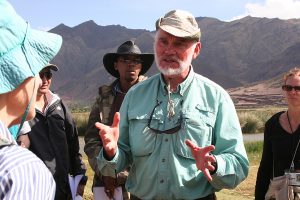
ROBERT FLEMING
Professor Equity & Empowerment (Natural History)
Education
- Ph.D. Michigan State University
- M.S. Michigan State University
- B.A. Albion College
- Canoeing Down the Zambezi by Robert L. Fleming Jr., May 2011.
- Peru’s Inter-Oceanic Highway by Robert L. Fleming Jr., February 2010.
- Bishnoi and Antelope in India by Robert L. Fleming Jr., February 2010.
- An Urban Park: Lodi Gardens in New Delhi, India by Robert L. Fleming Jr., July 2006.
- Butterflies and Natural History of the Siang Valley, Arunachal Pradesh, India by Robert L. Fleming Jr., July 2006.
- Fleming, Robert, et al. Across the Tibetan Plateau: Ecosystems, Wildlife, and Conservation. 2006
- A Note on the Rhesus Macaque Monkeys in Tibet, China by Robert L. Fleming Jr., May 2006.
- Natural History Notes on the Po Tsangpo and Rong Chu Confluence, Linzhi Prefecture, Se Tibet by Robert L. Fleming Jr., May 2006.
- Notes on Some Ecological Aspects of Gongga Shan Hailouguo Geopark, Sichuan, China by Robert L. Fleming Jr., April 2006.
- A Note on the Altai Mountains and the Kazakh Eagle Hunters by Robert L. Fleming Jr., June 2005.
- Notes on Demoiselle Cranes (Anthropoides Virgo) in Asia by Robert L. Fleming Jr., February 2005.
- Fleming, Robert and Lisa Fleming. Kathmandu Valley (This beautiful world; V.61). 1979
- Fleming, Sr. Robert L., Fleming Jr. Robert, Bangdel, Lain Singh. Birds of Nepal: With reference to Kashmir Sikkim. 1976
SUSHILA NEPALI
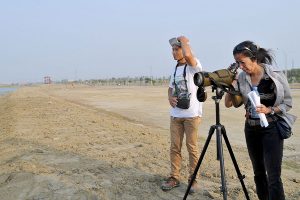
SUSHILA NEPALI
Associate Research Professor
Education
- Ph.D. Tribhuvan University
- M.A. Norwegian University of Life Sciences
- B.A. Tribhuvan University
- Thematic report on gender equality and livelihoods for national conservation framework and strategy prepared by IUCN for npc, Kathmandu (finalized) IUCN or National Planning Commission website
- Thematic report on Gender for national biodiversity strategic plan 2014, MOFSC Kathamndu. MOFSC website
- Change in the governance practices: A case conflict effects in Bardia’s Conservation Efforts. Paper submitted and presented at International Symposium on Mountain Resource Management in a Changing Environment May 28-June 1, 2012 Conference. Park Village Resort. Kathmandu. KU Website
- Assessing the causes of conflict and its affects on livelihoods: A study from Bardia National Park and Khata Corridor, Nepal. Bankojankari, July 2010. Kathamndu
- Gender Equity and Social Inclusion review document for Ministry of Local Development. June 2010 Kathmandu
FIREW KEFYALEW
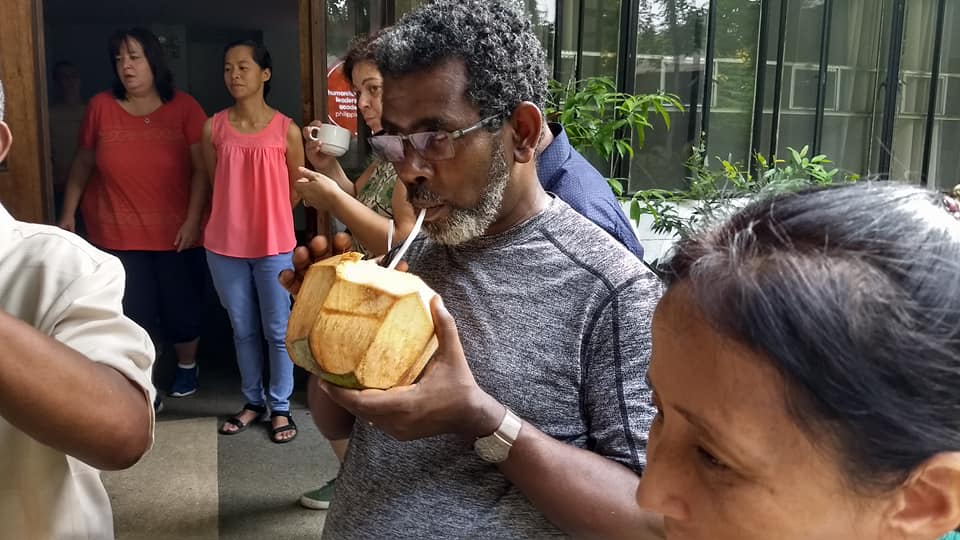
FIREW KEFYALEW
Associate Research Professor
Education
- M.A. Addis Ababa University
- B.A. Addis Ababa University
- Facilitator, editor, and resource person for books on reproductive health (Learning Our Way Out), Ethiopian Women in Peace Building and Conflict Resolution, Pastoral Land Use and Tenure in Ethiopia, Community Managed Disaster Risk Reduction, and Value Chain Development (2007 to 2012)
- Learning and Earning: How a Value Chain Learning Alliance Strengthens Farmer Entrepreneurship in Ethiopia. Firew Kefyalew, (con); John Belt; Wim Goris; Sorsa Debela, (con); Eva Smulders, (con) (2012)
- Notes on Promoting Youth Participation (April 2004) (Unpublished)
- The Child Soldiers of Northern Bahr el Ghazal: A Demobilization Experience (April 2004) Save the Children Sweden – Co-editor
- Education as A Tool For Child Protection: Save the Children Sweden’s experience in southern Sudan (unpublished)
- Children’s Rights in Southern Sudan: A Situation Analysis. (June 2003) Southern Sudan Program, Save the Children Sweden (Published) – Editor
- Youth Education: The southern Sudan Experience. (April 2002) Southern Sudan Program, Save the Children Sweden (Published) – Editor, contributor and designer of cover page
- Firew Kefyalew, Hirut Teferi (2000) Report from the regional seminar on the training of peacekeepers And the co-operation between humanitarian and military organizations
- Firew Kefyalew, Kirk Felsman and Hirut Teferi (July 2000) Unaccompanied Refugee Minors from Southern Sudan: Preliminary Views on Coping and Long-term Adaptation. A paper presented at the XXVII International Congress of Psychology. Stockholm, Sweden.
- Hirut Teferi, Kirk Felsman and Firew Kefyalew (July 2000) Research with Unaccompanied Refugee Minors: Ethical Dilemmas in the Field. A paper presented at the XXVII International Congress of Psychology. Stockholm, Sweden.
- Prevention Strategies for Street Migration: An Ethiopian Perspective (June, 1998)
- Family Reunification for Unaccompanied Minors in Rwanda (1998) with Giorgia Doná, Charles Kalinganire, Bernardine Mukakizima, and Felix Muramutsa,
- Present level of public knowledge and understanding of the problem of street children in Ethiopia. A paper presented at the Urban Childhood Conference, Trondheim, Norway (June, 1997) and at BEARCO workshop in Kampala (July, 1997)
- Research Methods in Human Sciences. A teaching material prepared for the National University of Sciences, Faculty of Education Sciences, Rwanda (November, 1997)
- The Reality of Child Participation in Research. Global Journal of Childhood. Vol. 3, 1996: 203 – 213 [published]
- Responsibility Behavior Compared Between Home-reared and Institutionalized Children (MA Thesis, 1994)
- The Role of Vocational Training in Conjunction with Integrated Education. (1993) [In Amharic]
- Conflict Generating Factors between High school Teachers and Directors. A national prize-winning paper. (1989) [In Amharic]
- The Study Habit of Blind Students in Addis Ababa University. (B.A. Senior Essay) Addis Ababa University. June 1986, Addis Ababa
JOHAN REINHARD

JOHAN REINHARD
Research Professor
Education
- Ph.D. University of Vienna, Austria, Department of Anthropology
- 2016 Ancient Mitochondrial DNA Provides High-Resolution Time Scale of the Peopling of the Americas. Science Advances 2016 (2). (Co-authored with Bastien Llamas et al.) http://advances.sciencemag.org/content/2/4/e1501385.full
- 2016 Frozen Mummies of the Andes. Expedition 58(2): 8-12.
- 2016 A Discovery in the Andes. In The Walkabout Chronicles: Epic Journeys by Foot, Tor & Siffy Torkildson (eds.), pp. 412-426, Sacred World Explorations, Alaska.
- 2014 Andes: High-Altitude Archaeological Sites as Cultural Heritage. In Encyclopedia of Global Archaeology, Claire Smith (ed.), pp. 225-230, Springer Publishers, New York.
- 2013 Archaeological, radiological, and biological evidence offer insight into Inca child sacrifice. Proceedings of the National Academy of Sciences (Co-authored with A. S. Wilson, E. L. Brown, C. Villa, N. Lynnerup, A. Healey, M. C. Ceruti, J. Reinhard, C. H. Previgliano, F. A. Araoz, J. Gonzalez Diez, T. Taylor.) www.pnas.org/cgi/doi/10.1073/pnas.1305117110
- 2013 Inca Mummies on Andean Peaks. In The Modern Explorers, Robin Hanbury-Tenison and Robert Twigger (eds.) pp. 288-293, Thames & Hudson, London.
- 2012 Sacred Featherwork of the Inca. In Peruvian Featherworks: Art of the Precolumbian Era, Heidi King (ed.), pp. 78-87, The Metropolitan Museum of Art, New York.
- 2012 Las Montañas Sagradas y las Culturas Preincaicas de los Andes. In América: Tierras de Montañas y Volcanes. Huellas de la Arqueología. Margarita Loera Chávez y Peniche, Stanislaw Iwaniszewski, and Ricardo Cabrera (eds.), pp. 51-71, Instituto Nacional de Antropología y Historia (INAH), México, D.F.
- 2011 The Last Nomads of Nepal. Nepal Heritage 2(2): 34-38.
- 2010 Inca Rituals and Sacred Mountains: A Study of the World’s Highest Archaeological Sites. (Co-authored with Constanza Ceruti), University of California (Cotsen Institute of Archaeology), Los Angeles.
- 2010 El Mistero Eterno de Machu Picchu. In La Ciudad Inca de Machu Picchu. David Cases- Pallares (ed.), pp. 2-3, Editorial Sol90, Buenos Aires.
- 2009 Arqueología Subacuática y Paisaje Sagrado: Investigaciones en los Lagos del Nevado de Toluca. In Las Aguas Celestiales: Nevado de Toluca, Pilar Luna, Arturo Montero, and Roberto Junco (eds.), pp. 30-31, Instituto Nacional de Antropología y Historia (INAH), México, D.F.
- 2009 Sintesis de Estudios Interdisciplinarios en las Momias Congeladas del Volcan Llullaillaco In Actas del XV Congreso Nacional de Arqueología Argentina, Antonio Austral and Marcela Tamagnini (eds.), Vol. 2: 639-645. Universidad Nacional de Rio Cuarto, Argentina. (Co-authored with Constanza Ceruti, Carlos Previgliano, Josefina González, and Facundo Arias)
- 2007 Machu Picchu: Exploring an Ancient Sacred Center. UCLA (Cotsen Institute of Archaeology), Los Angeles.
- 2007 Machu Picchu: The Sacred Center. Nueves Imágenes S.A., Lima (3rd revised edition).
- 2007 Inca Mummies: Child Sacrifice on Andean Peaks. In Discovery!: Unearthing the New Treasures of Archaeology Brian Fagan (ed.), London: Thames & Hudson, pp. 100-105.
- 2007 Stable isotope and DNA evidence for ritual sequences in Inca child sacrifice. Proceedings of the National Academy of Sciences 104 (42): 16456-16461. (Co-authored with Andrew Wilson, Timothy Taylor, Constanza Ceruti, José Antonio Chávez, Vaughan Grimes, Wolfram-Meier- Augenstein, Larry Cartmell, Ben Stern, Michael Richards, Michael Worobey, Ian Barnes, and Thomas Gilbert)
- 2007 Mitochondrial genome sequencing of an Incan pre-Columbian mummy recovered from a Peruvian glacier ("Juanita, the Ice Maiden of Ampato). GenBank, Accession Numbers EF660742 and EF660743. http://www.ncbi.nlm.nih.gov/Genbank/. (Co-authored with Keith McKenney, Tracy Spriggs, José Antonio Chávez, Hernan Lorenzi, Elizabeth Caler, Martin Shumway, Vadim Sapiro, and Claire Fraser-Liggett)
- 2007 Cloud Diving. In They Lived to Tell the Tale: True Stories of Modern Adventure from the Legendary Explorers Club. Jan Russell (ed.), New York: Lyons Press, pp. 231-236.
- 2005 Sacred Mountains, Ceremonial Sites, and Human Sacrifice Among the Incas. (Co-authored with Constanza Ceruti) Archaeoastronomy 19: 1-43.
- 2005 The Ice Maiden: Inca Mummies, Mountain Gods, and Sacred Sites in the Andes. Washington, D.C.: National Geographic Society. (Revised Paperback 2006)
- 2005 A Compositional Analysis of Pottery Vessels Associated with the Inca Ritual of Capacocha. (Co-authored with Tamara Bray, Leah Minc, Constanza Ceruti, Ruddy Perea, and José Antonio Chávez). Journal of Anthropological Archaeology 24: 82-100.
- 2005 Rescue Archaeology of the Inca Mummy on Mount Quehuar, Argentina. (Co-authored with Constanza Ceruti) In Proceedings of the Fifth World Mummy Congress, Emma Massa (ed.). (LXXX Journal of Biological Research), Torino, Italy, pp. 303 -307.
- 2005 The Search for Inca Mummies. Dig 7(9): 28-30.
- 2003 Into the Hidden Crater– An Andean Adventure. Explorers Journal 81(3): 16-23.
- 2003 Radiologic Evaluation of the Llullaillaco Mummies. (Co-authored with Carlos Previgliano, Constanza Ceruti, Facundo Arias, and Josefina González). American Journal of Roentgenology 181: 1473-1479.
- 2002 Sacred Landscape: The Prehistoric Cultures of the Andes. In Extreme Landscape: The Lure of Mountain Spaces, MacDonald, Bernadette (ed.), National Geographic Society, pp. 206-225.
- 2002 Machu Picchu: The Sacred Center. Lima: Instituto Machu Picchu (2nd revised edition).
- 2002 Machu Picchu: El Centro Sagrado. Cusco: Instituto Machu Picchu.
- 2002 A High Altitude Archaeological Survey in Northern Chile. Revista Chungara 34(1): 85-99.
- 2001 Coropuna: Templo y Montaña de las Incas. Revista del Centro de Investigaciones Arqueológicas de Alta Montaña 6: 123-130.
- 2000 Investigaciones Arqueológicas en el Volcán Llullaillaco (Co-authored with Constanza Ceruti), Salta: Editorial de la Universidad Católica de Salta (EUCASAL).
- 2000 The Search for Inca Mummies. Calliope 10(7) (March): 40-43.
- 1999 Frozen in Time. National Geographic 196(5) (November): 36-55.
- 1999 Machu Picchu. National Geographic Traveler (special issue) 16(7) (October): 232-233.
- 1999 Coropuna: Lost Mountain Temple of the Incas. South American Explorers Journal 58:5, 26-30.
- 1998 New Inca Mummies. National Geographic 194(1) (July): 128-135.
- 1998 Discovering the Inca Ice Maiden. Washington, D.C: National Geographic Society.
- 1998 The Temple of Blindness: An Investigation of the Inca Shrine of Ancocagua. Andean Past 5: 87-106.
- 1997 Die Geschichte der Mumie. Geo (special issue), October, pp. 78-84.
- 1997 Sharp Eyes of Science Probe the Mummies of Peru. National Geographic 191(1) (January): 36-43.
- 1997 La Medicina Entra en la Intimidad de las Momias Incas. GEO (Spain) 128 (September): 88-95.
- 1997 Llullaillaco: Investigación del Yacimiento Arqueológico más Alto del Mundo. Anales de Arqueología y Etnología, Mendoza (Argentina) 48/49: 105-129.
- 1996 Peru’s Ice Maidens. National Geographic 189(6) (June): 62-81.
- 1996 El Eterno Regreso de las Momias. GEO (Spain) 118 (November): 106-117.
- 1996 The Lore of a Desert Dive. Americas 48(4): 30-37.
- 1996 The Enigmatic Nazca Lines: Sacred Symbols on the Land. Site Saver: The Newsletter of Sacred Sites International Foundation 6(3): 2, 5, 7.
- 1995 House of the Sun: The Inca Temple of Vilcanota. Latin American Antiquity 6(4): 340- 349.
- 1993 Llullaillaco: An Investigation of the World's Highest Archaeological Site. Latin American Indian Languages Journal 9(1): 31-54.
- 1992 Review of Peru: Hombre e historia de los orígenes al siglo XV, by Duccio Bonavia. Latin American Antiquity 3(4): 368-369.
- 1992 Exploraciones Arqueológicas Subacuáticas en el Lago Titikaka, (Co-authored with Carlos Ponce, Eduardo Pareja, Max Portugal, and Leocadio Ticlla), La Paz: Editorial La Palabra.
- 1992 Investigaciones arqueológicas subacuáticas en el lago Titicaca. In Exploraciones Arqueológicas Subacuáticas en el Lago Titikaka, Carlos Ponce (et al), La Paz: Editorial La Palabra, pp. 419-530.
- 1992 Sacred Peaks of the Andes. National Geographic 181(3)(March): 84-111.
- 1992 Misterios del Lago Titicaca: Arqueología Bajo las Olas. In Guía Cultural y Turística de Bolivia, P.McFarren (ed.), La Paz: Fundación Cultural Quipus, pp. 243-274.
- 1992 Tiahuanaco, Centro Sagrado de los Andes. In Guía Cultural y Turística de Bolivia, P. McFarren (ed.), La Paz: Fundación Cultural Quipus, pp. 203-242.
- 1992 Underwater Archaeological Research in Lake Titicaca, Bolivia. In Ancient America: Contributions to New World Archaeology, N. Saunders (ed.), Oxford: Oxbow Books, pp. 117-143.
- 1992 An Archaeological Investigation of Inca Ceremonial Platforms on the Volcano Copiapo, Central Chile. In Ancient America: Contributions to New World Archaeology, N. Saunders (ed.), Oxford: Oxbow Books, pp. 145-172.
- 1992 Studies of Nazca. Archaeoastronomy 17: S62-S67, Cambridge.
- 1991 Shangri-la and the Hidden Valleys. In Insight Guides Nepal, Lisa Choegyal (ed.), Singapore: APA Publications, pp. 256-259.
- 1991 Machu Picchu: The Sacred Center. Lima: Nuevas Imágenes.
- 1990 Heights of Interest. South American Explorer 26: 24-29.
- 1990 Tiahuanaco, Sacred Center of the Andes. In The Cultural Guide of Bolivia, P. McFarren (ed.), La Paz: Fundación Cultural Quipus, pp. 151-181.
- 1990 Mysteries of Lake Titicaca: Archaeology Beneath the Waves. In The Cultural Guide of Bolivia, P. McFarren (ed.), La Paz: Fundación Cultural Quipus, pp. 183-203.
- 1990 Informe sobre una sección del camino Inca y las ruinas en la cresta que baja del nevado de Tucarhuay entre los ríos Aobamba y Santa Teresa. Revista Sacsahuaman 3: 163-187, Cusco.
- 1988 The Nazca Lines: A New Perspective on their Origin and Meaning, Lima: Editorial Los Pinos (4 th revised edition).
- 1988 The Nazca Lines, Water and Mountains: An Ethno-archaeological Study. In Recent Studies in Pre-Columbian Archaeology, N. Saunders and O. de Montmollin (eds.), Oxford: British Archaeological Reports, pp. 363-414.
- 1987 Las Lineas de Nazca: Un Nuevo Enfoque sobre in Origen y Significado. Lima: Editorial Los Pinos (1st Spanish edition) (2nd revised edition 1988).
- 1987 Chavín y Tiahuanaco: Una Nueva Perspectiva de Dos Centros Ceremoniales Andinos. Boletín de Lima 50: 29-49 and 51: 35-52.
- 1987 The Hidden Crater: Expedition to an Unexplored Plateau of Western Argentina. Optima 35 (4): 219-227, South Africa.
- 1987 The Sacred Himalaya. American Alpine Journal 29: 123-132.
- 1985 Chavin and Tiahuanaco: A New Look at Two Andean Ceremonial Centers. National Geographic Research 1(3): 395-422, Washington, D.C.
- 1985 Sacred Mountains: An Ethnoarchaeological Study of High Andean Ruins. Mountain Research and Development 5(4): 299-317.
- 1985 The Nazca Lines: A New Perspective on their Origin and Meaning, Lima: Editorial Los Pinos (1st edition).
- 1985 Author’s reports of 40 archaeological sites appeared in El Enigma de los Santuarios Indígenas de Alta Montaña, Antonio Beorchia (compiler), San Juan: CIADAM.
- 1983 Las Montañas Sagradas: Un Estudio Etnoarqueológico de Ruinas en las Altas Cumbres Andinas. Cuadernos de Historia 3: 27-62, Santiago.
- 1983 Las Líneas de Nazca, Montañas y Fertilidad. Boletín de Lima 26: 29-50, Lima.
- 1983 High-Altitude Archaeology and Andean Mountain Gods. American Alpine Journal 25: 54-67.
- 1982 Expedición Arqueológica al Altiplano de Tarapacá y sus Cumbres. Revista de Corporación para el Desarrollo de la Ciencia 2(2): 17-42, Santiago (with Julio Sanhueza).
- 1981 Expedición Arqueológica al Volcán Licancabur. Revista de Corporación para el Desarrollo de la Ciencia 1(4): 31-38, Santiago (with Ana Maria Baron).
- 1981 Notas Sobre la Arqueología Subacuatica del Titicaca. Hoy 12(4): 3, La Paz.
- 1981 The Chonos of the Chilean Archipelago. Bulletin of the International Committee on Urgent Anthropological and Ethnological Research 23: 89-98, Vienna.
- 1980 Ascensión al Volcán Licancabur y Otros Nevados Revista del Centro de Investigaciones Arqueológicos de Alta Montaña 4: 41-44, San Juan (with George Serracino and Ana Maria Barón).
- 1980 Ruinas arqueológicas sobre la cima del Volcán Paniri. Revista del Centro de Investigaciones Arqueológicas de Alta Montaña 4: 17-18, San Juan (with George Serracino).
- 1978 Khembalung: The Hidden Valley. Kailash, A Journal of Himalayan Studies 6(1): 5-35, Kathmandu.
- 1978 Nepal Cross-Cultural Trainers Manual (with Lewis Underwood and Bishnu Shrestha), New Educational Research Associates: Kathmandu.
- 1977 Raute (Nepal)-Camp Scenes and Bartering. Publications to Scientific Films of the Institute for Scientific Film, Series 7(42), 6 pp., Göttingen.
- 1977 Raji (Nepal)-Shaman Initiation. Publications to Scientific Films of the Institute for Scientific Film Series 7(42), 9 pp., Göttingen.
- 1977 Raji (Nepal)-Divination and Magical Treatment of an Illness. Publications to Scientific Films of the Institute for Scientific Film Series 7(41), 8 pp., Göttingen.
- 1977 Kusunda (Nepal)-Consecration of Hunting Equipment. Publications to Scientific Films of the Institute for Scientific Film Series 7(40), 7 pp., Göttingen.
- 1977 Kusunda (Nepal)-Construction of a Lean-To during Hunting. Publications to Scientific Films of the Institute for Scientific Film Series 7(39), 7 pp., Göttingen.
- 1977 Newar, Kumhale Caste (Nepal)-Pottery- Making. Publications to Scientific Films of the Institute for Scientific Film Series 7(38), 9 pp., Göttingen.
- 1977 Newar, Udhas Caste (Nepal)-Construction of a Water Pipe. Publications to Scientific Films of the Institute for Scientific Film Series 7(37), 7 pp., Göttingen.
- 1976 The Ban Rajas: A Vanishing Tribe. Contributions to Nepalese Studies 4(1): 1-22, Kathmandu.
- 1976 Shamanism and Spirit Possession: The Definition Problem. In Spirit Possession in the Nepal Himalayas, J. Hitchcock & R. Jones (eds.), New Delhi: Vikas Publishing House, pp. 12-20.
- 1976 Shamanism among the Raji of Southwest Nepal. In Spirit Possession in the Nepal Himalayas, J. Hitchcock & R. Jones (eds.), New Delhi: Vikas Publishing House, pp. 263-292.
- 1974 Underwater Archaeology in Austria: A Preliminary Report. International Journal of Nautical Archaeology and Underwater Exploration 3(2): 320, London.
- 1974 The Raute: Notes on a Nomadic Hunting and Gathering Tribe of Nepal. Kailash, A Journal of Himalayan Studies 2(4): 233-271, Kathmandu.
- 1973 Deskriptive Analyse von Schamanismus und Hexerei bei den Purbia Raji Sudwest– Nepals, Ph.D. Dissertation, University of Vienna, 302 pp.
- 1972 Report on an Unclassified and a Dravidian Language in Nepal. Wiener Linguistische Gazette 1: 33-34, Vienna.
- 1970 Preliminary Linguistic Analysis and Vocabulary of the Kusunda Language. Summer Institute of Linguistics, Kathmandu, 31 pp. (with Sueyoshi Toba).
- 1970 The Dhangar: A Dravidian Tribe in Nepal. Bulletin of the International Committee on Urgent Anthropological and Ethnological Research 12: 91-94, Vienna.
- 1969 Preliminary Report on Wood Working in Nepal. Anzeiger der philosophische- historischen Klasse der Osterreichischen Akadamie der Wissenschaften 106: 110-115, Vienna.
- 1969 Preliminary Report on Pottery Making in the Kathmandu Valley, Nepal. Anzeiger der philosophische- historischen Klasse der Osterreichischen Akadamie der Wissenschaften 106: 115-130, Vienna.
- 1969 Aperçu sur les Kusunda: peuple chasseur du Népal. Objets et Mondes 9(1): 89-106, Paris.
- 1969 Research with the Raji in Western Nepal: A Brief Summary. Bulletin of the International Committee on Urgent Anthropological and Ethnological Research 11: 33- 34, Vienna.
- 1968 The Kusunda: Ethnographic Notes on a Hunting Tribe of Nepal. Bulletin of the International Committee on Urgent Anthropological and Ethnological Research10: 95- 110, Vienna.
MEIKE SCHLEIFF

MEIKE SCHLEIFF
Associate Research Professor
Education
- DrPH Johns Hopkins University
- M.S John Hopkins Bloomberg School of Public Health
- B.S Berea College
- Schleiff, M., Kumapley, R., Freeman, P., Gupta, S., Rassekh, B., Perry, H. A Comprehensive Review of the Evidence Regarding the Effectiveness of Community-based Primary Health Care in Improving Maternal, Neonatal, and Child Health: 5. Equity Effects. Journal of Global Health, special issue in press 2017.
- Schleiff, M. 2017. The Interface Between Communities and the Primary Care System in Rural and Low-income West Virginia: Historical and County-level Experience to Inform the Future of Community Health Workers (CHWs). Doctoral dissertation; ProQuest.
- Jennings, M.C., Pradhan, S., Schleiff, M., Sacks, E., Freeman, P., Gupta, S., Rassekh, B., Perry, H. A Comprehensive Review of the Evidence Regarding the Effectiveness of Community-Based Primary Health Care in Improving Maternal, Neonatal and Child Health: 2. Maternal Health Findings. Journal of Global Health, in press 2017.
- Freeman, P., Schleiff, M., Sacks, E., Rassekh, B., Gupta, S., Perry, H. A Comprehensive Review of the Evidence Regarding the Effectiveness of Community-based Primary Health Care in Improving Maternal, Neonatal, and Child Health: 4. Child Health Findings. Journal of Global Health, special issue in press 2017.
- Perry, H., Sacks, E., Schleiff, M., Kumapley, R., Gupta, S., Rassekh, B., Freeman, P. A Comprehensive Review of the Evidence Regarding the Effectiveness of Community-based Primary Health Care in Improving Maternal, Neonatal, and Child Health: 6. Strategies Used by Effective Projects. Journal of Global Health, special issue in press 2017.
- Tancred T., Schleiff, M., Peters, D., Bigdeli, M, Balabanova, D. 2016. Teaching and Training in Health Policy and Systems Research: Global Status and Priorities. Bulletin of the World Health Organization.
- George, A., Lefevre, A., Schleiff, M., Mancuso, A., Sacks, E., Sarriot, E. 2016. Expanding Evidence Approaches for Improving and Sustaining Community maternal, Newborn, and Child Health: Preliminary Report. Report for the United States Agency for International Development (USAID).
- Tancred, T., Schleiff, M., Peters, D., Balabanova, D. 2015. Global Mapping of Health Policy and Systems Research (HPSR) Teaching. Alliance for Health Policy and Systems Research, W.H.O. Report and background document for an expert consultation on teaching HPSR. Available at: http://healthsystemsglobal.org/twg-group/4/Teaching-and-Learning-Health-Policy-and-Systems-Research/.
- Pappas, E., Schleiff, M., Pappas, J., Puentes, R., Taylor-Ide, L., Taylor, D. 2015. Curriculum Plans for Community Health and Prevention, Entrepreneurship, and Family Agriculture. The Pew Charitable Trusts and University of the World.
- Rodrigues, D., Schleiff, M. 2014. Department of International Health Research Mapping: Final Report. A review and past and present foci in research within the IH Dept. at Johns Hopkins and recommendations towards a strategic plan.
- Gupta, S., Hyder, A., Schleiff, M, Tran, N., Ghaffar, A. 2014. Global Consultation on Capacity Development for Health Policy and Systems Research in Low- and Middle-Income Countries. Alliance for Health Policy and Systems Research, WHO.
- Schleiff, M. 2013. Community-based Versus Community-directed Approaches. Tropical Health Matters guest blog post, December 17, 2013. Available at: http://malariamatters.org/community-based-versus-community-directed-approaches/.
- Schleiff, M. 2013. Analysis of the World Health Organization (WHO)’s Initiatives for Global Action Towards Greater Equity in Health: Primary Health Care and Social Determinants of Health. Masters Thesis, Johns Hopkins Bloomberg School of Public Health.
- Report by WHO Watch and the People’s Health Movement on the 65th World Health Assembly. Global Health Watch. May 2012. Geneva, Switzerland. http://www.ghwatch.org/sites/www.ghwatch.org/files/WHOWatchReport_May2012.pdf
- Schleiff, M. 2011. Return to Haiti—And Haiti to Haitians. Huffington Post blog post on May Goldwasser’s RED page, May 25, 2011. Available at: http://www.huffingtonpost.com/amy-goldwasser/red-the-book-return-to-ha_b_551215.html
- Schleiff, M. 2007. A ‘Beautiful’ Cause of Death that Had Me Dying for a While in: RED: The Next Generation of American Writers-Teenaged Girls-On What Fires up their Lives Today. Ed. Amy Goldwasser. Hudson Street Press, New York: 2007.
DAN WESSNER
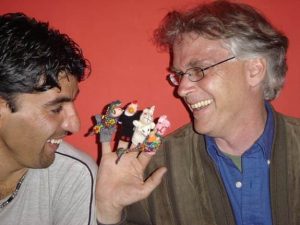
DAN WESSNER
Professor & Director, Bending Bamboo Project
Education
- Ph.D. University of Denver Korbel School of International Studies
- J.D. University of Virginia School of Law
- M.Div. Princeton Theological Seminary
- B.A. Stanford University
- “Learning beyond the Light Bulb among Least Developed Countries based on a Sustainable PV Solar
- Utility Model.” New Brunswick, NJ: Global Health Technology Conference Proceedings, Institute of Electrical and Electronics Engineers (2014).
- “Development and Peacebuilding.” International Encyclopedia of Peace. New York: Oxford University Press (2009).
- “Vietnam: Post-Conflict Peacebuilding.” International Encyclopedia of Peace. New York: Oxford University Press (2009).
- “Addressing Fundamentalism by Legal and Spiritual Means.” Human Rights & Human Welfare 57-76 (2003) (http://www.du.edu/gsis/hrhw/volumes/2003/wessner-2003.pdf).
- “Pacifist Pedagogy and the Bush Doctrine.” In Teaching Peace: Nonviolence and the Liberal Arts, eds. J. Denny Weaver and Gerald Biesecker-Mast. Lanham, MD: Rowman & Littlefield, 2003, pp. 147-63.
- Review Essay. Perry Bush, “Two Kingdoms, Two Loyalties: Mennonite Pacifism in Modern America, and Glen Stassen, ed. Just Peacemaking: Ten Practices for Abolishing War.” The Conrad Grebel Review 18:2 (Spring 2000), pp. 95-98.
- “From Judge to Participant: The United States as Champion of Human Rights.” In Debating Human Rights, ed. Peter Van Ness. London: Routledge, 1999, pp. 255-77. Published earlier in Critical Asian Studies 28:2 (1996), pp. 29-45.
- Monkey King & Sage: Hanoi’s Politics of Syncretism. Doctoral dissertation in International Studies (archived online, June 2001). Graduate School of International Studies, University of Denver.
- “Floating to the Unknown.” Global Justice 1:2 (Summer 1995), pp. 39-47.
- “Denver Community Development through Edgar’s Eyes.” Global Justice 4:2 (Winter 1994), pp. 36-39.
- “Vietnam Comes Full Circle.” Areopagus (Hong Kong) 7:1 (1994).
- “Outer Continental Shelf Revenue Sharing for Coastal States.” Virginia Journal of Natural Resources Law 3:131 (1983), pp. 131-61.
MICHAEL RECHLIN
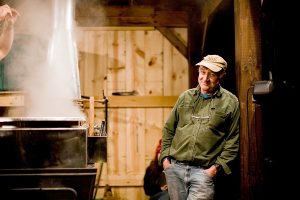
MICHAEL RECHLIN
Research Professor, Appalachian Program
Education
- Ph.D. State University of New York, College of Environmental Science & Forestry
- M.S. University of Michigan
- B.S. University of Michigan
- AAS Paul Smith’s College
- Boyer-Rechlin, Nathan, Gregory L. Bruland, and Michael A. Rechlin. 2016. The effect of Agricultural Land Use on Benthic Macroinvertebrate Communities and the Applicability of Family Level Bioassessment Metrics in Southern Illinois Headwater Streams. Transactions of the Illinois State Academy of Science.
- Rechlin, Mike. 2015. Maple Syrup: An Introduction to the Science of a Forest Treasure. McDonald & Woodward Publishing Company, Newark, OH.
- Twery, Mark, Elizabeth Olson, Gary Wade and Mike Rechlin. 2013. Changes in Abundance of Vascular Plants under Varying Silvicultural Systems at the Forest Ecosystem Research and Demonstration Area, Paul Smiths, New York. Northern Research Station. Research Note: NRS-160. US Forest Service.
- Rechlin, Mike and Scott Schneberger. 2012. The Natural Choice: Why Bark’s the Best Camp Cover-up. Adirondack Life.
- Rechlin, Michael, William R Burch, A. L. Hammett, Bhishma Subedi, Surya Binayee, and Indu Sapkota. 2007. Lal Salam and Hario Ban: The Effects of the Maoist Instugency on Community Forestry in Nepal. Forests, Trees and Livlihoods. Vol. 17. 245-253.
- Rechlin, Michael and Ritu Baruni. 2006. A Passions for Pine: Forest Conservation Practices of the Apatatani Peopla of Arunachal Pradesh. himalaya. Vol 26 no. 1 and 2. 19-24.
- Rechlin, Michael and Hans MIchielen, 2005. Making Maple Syrup in a Land of Funnel Cakes and Pulled Pork. The Maple Digest.
- Song, Yajie, Guoqian Wang, William R. Burch and Michael A. Rechlin. 2004. From Innovation to Adoption: Lessons From 20 Years of the SHIFT Forest Management System in Sanming, China. Forest Ecology and Management 191: 225-238.
- Rechlin, M. A., A. L. Hammett, W. R. Burch, and Yajie Song. 2002. Sharing the wealth: A Comparative Study of the Distribution of Benefits from Community Forest Management in Southern China and Nepal. Journal of Sustainable Forestry 15(2): 1-23.
- Sowers, Fred, Michael Rechlin, Manzoorul Haque and Satish Prabasi. 1994. Forestry and the Environment: Nepal Case Study. Working Paper No. 201. USAID, Washington, DC.

